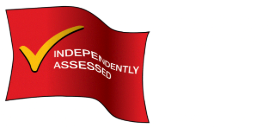How to Load A Caravan Safely
If you’re a first time caravan owner, you might be wondering how to best load your caravan. After all, the way you load your caravan can have a significant impact on the stability and handling of your towing outfit and there are legal limits to the amount you’re permitted to tow. In order to stay safe on the road, it’s really important to consider how much extra weight you’re putting in the caravan and where you’re stowing it all.
We’ll cover some of the technical bits which will help you work out how much weight you can safely add to your caravan and we’ll also look at the best parts of the caravan to stow different kinds of objects.
How much can you safely tow?
The first thing you should ask yourself is ‘how much can you safely tow’? This will depend on your caravan and your towing vehicle. Not only can overloading your caravan make your towing unit unsafe on the road, it is breaking the law and will invalidate your insurance.
You’ll need to know the Maximum Technically Permissible Laden Mass (MTPLM) of your caravan. This is the maximum weight allowable when your caravan is fully loaded. This should not be more than 85% of your tow car’s kerb weight. If it is, you’ll need to work with the lower value.
You’ll also need to know your caravan’s Mass In Running Order (MIRO). This is the weight of the caravan when it left the factory, including any fittings that were provided as standard. If you or a previous owner have added any extras, such as a motor mover, you will need to add this on.
Once you have the caravan’s MTPLM and MIRO, you can calculate the User Payload. This is the difference between the MTPLM and the MIRO and is the amount of weight you can add to the caravan with items such as clothes, food, sports equipment or any other luggage you want to take with you on your trip.
You’ll also want to check the Noseweight Limit of your tow vehicle. This is the maximum vertical pressure that can be exerted on the towbar. The vehicle’s manufacturer will have calculated this figure.
If you’re not sure you’ve done your calculations correctly when loading your caravan, you can always take it to a weighbridge just to double check your towing unit will be as stable as possible when you hit the main roads. There are public weighbridges where you can take your caravan to make sure you haven’t exceeded the MTPLM.
How to load your caravan
Now you know exactly how much you can safely put in your caravan, you’ll need to put everything in the right place. Unfortunately it’s not a case of throwing everything in. If you store heavy items in the wrong place, you can increase the risk of ‘snaking’ when you’re on the road. Here are some tips to help you load your caravan safely and efficiently.
Load the heaviest items first. This makes the whole process much easier. Heavier items should be stowed on the floor of the caravan, as close to the axle as you can get them. Resist the temptation to store heavy things beneath a rear bed as this can have a real impact on the balance of your towing unit. Cargo nets or cargo bars can help keep things in place if there are no conveniently placed storage compartments lower down near the axle. If you leave things to slide around on the floor, you can create more issues.
Your medium-weight items should come next. You’ll want to stow these items as low in the caravan as possible, with the heaviest of them as close to the axle as possible. You can spread these items out a little more than the heavier items, however, avoid putting them in overhead lockers if possible. More can go towards the front of the caravan as this will help with balancing the unit out and avoid things tipping backwards. Make sure you don’t overload the nose of the caravan though.
Light items go in last. Overhead lockers should be reserved for the items that weigh the least. This usually means things like summer clothing or lightweight plastic items. If you load heavy items in these lockers, you risk adjusting the caravan’s centre of gravity to make it less stable on the road.
Items that you are likely to take on all caravan trips could be weighed before your first trip. Make a note of how much these items weigh and where they should be stowed in the caravan and you won’t need to do it again. You would only need to take note of the weights of additional items on subsequent trips.
Make sure your water containers are empty before you leave. These can add a considerable amount of weight and you’ll also want to avoid the movement of the water in the tanks while you’re on the road. Don’t forget to make sure the toilet is empty too.
When packing up your kitchen items, think about what you’re really going to need. If your usual cookware is particularly heavy stoneware, consider getting a lighter set just for the caravan. Traditional crockery can also be quite heavy, there are plenty of lightweight camping versions available. You’re also unlikely to need full sets of things if there’s just a couple of you on your trip.
Consider doing things like food shopping when you reach your destination. Unless you’re heading a long way off the beaten track, just packing up the essentials and going for a quick shopping trip when you arrive is a good idea.
If you’re getting uncomfortably close to your MTPLM and you have no more room in your tow vehicle, take stock of what you’re taking with you. Do you absolutely need everything you’ve packed? If you do, you might need to think about upgrading certain fixtures and appliances to lighter-weight versions. For example, light-weight gas bottles are available, saving you a couple of kilograms.
Remember, if you forgot to include the weight of things like a motor mover, wheel clamps or your caravan jack in the MIRO, you’ll need to take this into account when loading your caravan. These items can easily weigh 50kgs, so can have a real impact.
Many new cars and caravans now have electronic systems which are designed to help increase stability and reduce snaking. However, even if your towing unit does feature these systems, you should still follow the correct procedure when loading your caravan. Many new caravans have central kitchens with appliances deliberately positioned over the axle which helps evenly distribute weight. However, rear bathrooms which have additional storage space mean that more weight is towards the back of the caravan to start with.




 Spidersnet
Spidersnet